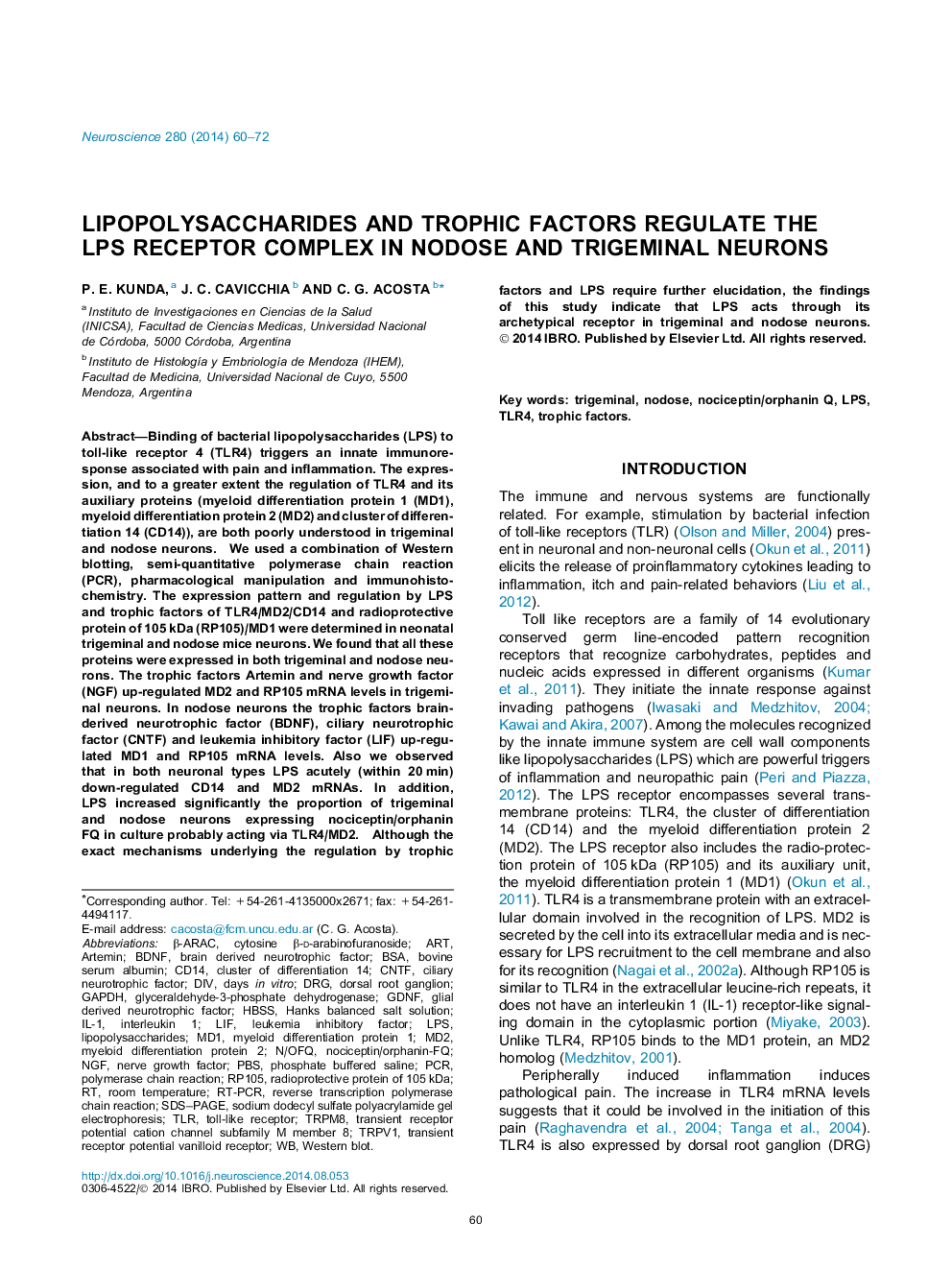| Article ID | Journal | Published Year | Pages | File Type |
|---|---|---|---|---|
| 6273306 | Neuroscience | 2014 | 13 Pages |
Abstract
Although the exact mechanisms underlying the regulation by trophic factors and LPS require further elucidation, the findings of this study indicate that LPS acts through its archetypical receptor in trigeminal and nodose neurons.
Keywords
CD14RT-PCRHBSSNGFGDNFTLRTRPM8Trigeminalcytosine β-d-arabinofuranosidePBSTLR4MD1MD2RP105Transient receptor potential vanilloid receptorLIFtransient receptor potential cation channel subfamily M member 8CNTFDRGGAPDHIL-1TRPV1LPSdorsal root ganglionBDNFBSAHanks balanced salt solutionN/OFQSDS–PAGEArteminbovine serum albuminSodium dodecyl sulfate polyacrylamide gel electrophoresisinterleukin 1Toll-like receptorcluster of differentiation 14Room temperatureDIVdays in vitrobrain derived neurotrophic factorleukemia inhibitory factornerve growth factorGlial derived neurotrophic factorciliary neurotrophic factorTrophic factorsPhosphate buffered salineLipopolysaccharidesNodoseARTpolymerase chain reactionreverse transcription polymerase chain reactionPCRWestern blotmyeloid differentiation protein 2glyceraldehyde-3-phosphate dehydrogenase
Related Topics
Life Sciences
Neuroscience
Neuroscience (General)
Authors
P.E. Kunda, J.C. Cavicchia, C.G. Acosta,
